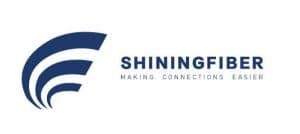Fiber Optic FAQs: 9 Tips You Should Know
1. What is the FTB,OTB,FDB,ODF?
FTB is Fiber termination box.kown as optical termination box(OTB),FDB or OTB is a compact fiber management product of small size. It is widely adopted in FTTx cabling for both fiber cabling and cable management.ODF is optical distribution frame.FDB is Fiber distributor box .Actually,they are similar thing,fiber termination box can be regarded as the mini size of fiber optic patch panel and ODF.even It will be no wrong if you consider they are same thing.
According to the design, FTB can be further divided into wall mount type and rack mount type.According to installation environment, there are indoor FTB and outdoor FTB.
2. What is the difference of the PLC splitter,FBT splitter?
PLC splitter, also called Planar Waveguide Circuit splitter, is used to divide one or two light beams to multiple light beams uniformly or combine multiple light beams to one or two light beams.
FBT splitter, also called Fused Biconic Taper splitter .based on the traditional technology, it is to bundle together two or more optical fibers, and then pull the cone machine melt stretching, and real-time monitoring the change of the ratio, spectral ratio requirements after melt stretching, one side retain a single fiber (the rest of the cut) as input, the other end is a multi-channel output.
PLC splitter is newer than FBT splitter,and wider used in Fiber optic network.
3. How to choose the fiber optic splice closure?
First,splicing closures, are usually used to provide space for fiber optic cables to be spliced together. The fiber optic closure connects and stores optical fibers safely either in the outside plant or indoor buildings. It can provide protection for the fiber joint and the fiber cables.So the quality of the material is the key point.So,when choose the common price ,then let the suppplier promise the material is the ABS/PC.
Second,optical fiber joint closures include the horizontal type and the vertical type.the horizontal type is designed for buried applications and Pole mounting applications.and the vertical type mainly for pole mounting applications.
third,your choice depend on the your requirement for the Cable Compatibility and Numbers of Cable Ports.there are many models have deferent parameters for your renference.
4. The fiber optic patch cord is so many different types,how to distinguish and get the right one?
The patch cord can be classified to many according to defferent parameter.Now we give the common catalogues.
- Connector type:LC/SC/ST/FC/MPO/MTP.
- Mode type:Single-mode or Multimode patch cord.
- Quantity of the connector: Simplex or Duplex patch cord
- Cable length:1m/5m/10m/20m/30m/50m etc.
- Connector Polish Type:APC/UPC type.
- Cable jacket type:PVC/LSZH/OFNP/Armored.
Then choose the right one according to your application requirement.
5. What is the difference between the GPON and EPON?
PON:Passive Optic Network,is a system that brings optic fiber cabling and signals all or most of the way to the end user. According to where the PON terminates,the system can be described as FTTC(fiber to the curb),FTTB(fiber to the buiding),FTTH(fiber to the home).
GPON(Gigabit PON) is based on the TU-TG.984.x standard for the new generations of the broadband passive optic access.It provides up to 2.5 Gbit/s transmission rate.it is widely deployed in FTTH networks,it can develop into two directions which is 10 Gpon and WDM-PON.
EPON(Ethernet PON) is the reval activity to GPON whtich uses Ethernet packets instead of ATM cells.EPON/GEPON use 1 Gigabit per second upstream and downstream rates.EPON is a an emerging broadband access technology,through a singgle fiber optic access system,to access the data,voice and video service and it has a good economy.
6. Regarding to the Fiber optic connector,What is the defference Of the APC and UPC,how to choose?
APC:angle-polished connectors UPC ultra-polished connectors
- Color:APC is green,UPC is blue
- Physical:The APC ferrule endface radius is polished at an 8° angel while UPC connectors are polished at a 0° angle
- Insertion loss:Same.
- Return loss:APC -65dB UPC -55dB.APC is greater performance than the UPC.
In general, UPC connectors are deployed in transport systems designed for digital signal transport, while APC connectors are preferred for RF video signal transport. APC connectors are also preferred where there are open ports at the other end of splitters, very typical in FTTP network designs.
7. What are fiber optic attenuators?
Fiber optic attenuators are used in applications where the optical signal is too strong and needs to be reduced.
Fiber optical attenuators are typically classified as fixed or variable attenuators.Fixed attenuators have a fixed optical power reduction number, such as 1dB, 5dB, 10dB, etc.Variable attenuators level can be adjusted, such as from 0.1dB to 20dB, or even 50dB.
There are many defferent fiber optic attenuator designs:Femal to Femal fixed attenuators; Female to female variable attenuators ;male to female fixed attenuators; in-line patch cable type variable attenuators.
8. Single mode vs multimode Fiber: which should I choose?
Single mode means the fiber enables one type of light mode to be propagated at a time. While multimode means the fiber can propagate multiple modes. The difference between single mode and multimode fiber mainly lies in fiber core diameter, wavelength, light source and bandwidth.
When making a decision between single mode and multimode fiber cables, the first factor to consider is the fiber distance which you need actually. For example, in a data center, multimode fiber cables is enough for the distance of 300-400 meters. While in applications that require distance up to several thousands of meters, the single mode fiber is the best choice. And in applications which can use single mode and multimode fiber, other factors like cost and future upgrade requirements should be taken into consideration for your choice.
9. What are the SFP,SFP+ ,QSFP+ optic transceiver?
SFP:small form-factor pluggable(SFP) can be regarded as an upgraded version of GBIC (Gigabit interface converter). Its volume is only 1/2 of the GBIC module, which greatly increases the port density of network devices. And the data rate of SFP ranges from 100 Mbps to 4 Gbit/s.
SFP+:small form-factor pluggable plus(SFP+)is an enhanced version of the SFP. It supports 8 Gbit/s Fibre Channel, 10 Gigabit Ethernet and Optical Transport Network standard OTU2.
QSFP+ is an evolution of QSFP (quad small form-factor pluggable). QSFP can carry 4 channels simultaneously and each channel can handle 1 Gbit/s data rate- hence the name Quad SFP. Unlike QSFP, QSFP+ supports 4x 10 Gbit/s channels. And the 4 channels can be combined into a single 40 Gigabit Ethernet link.


